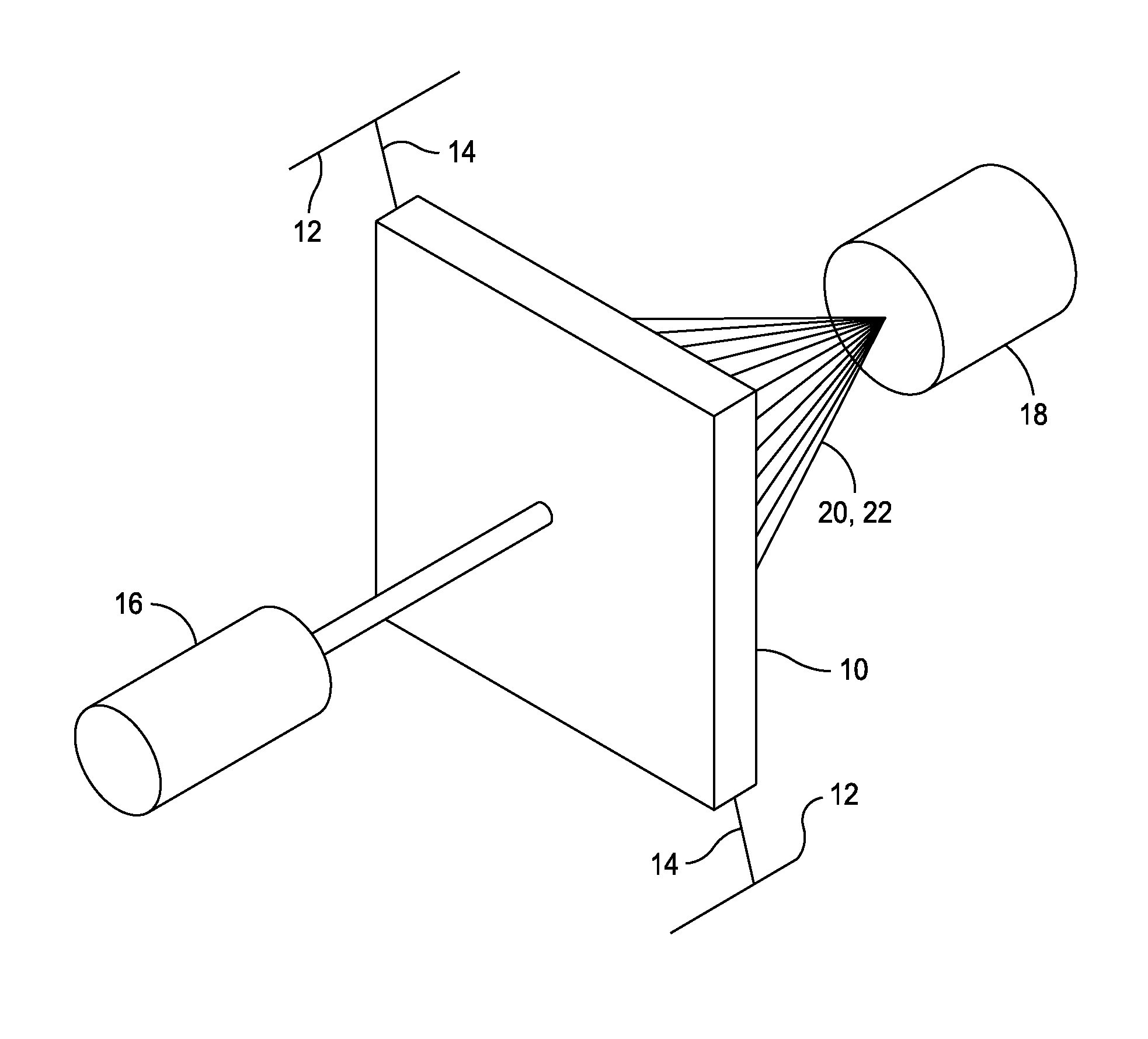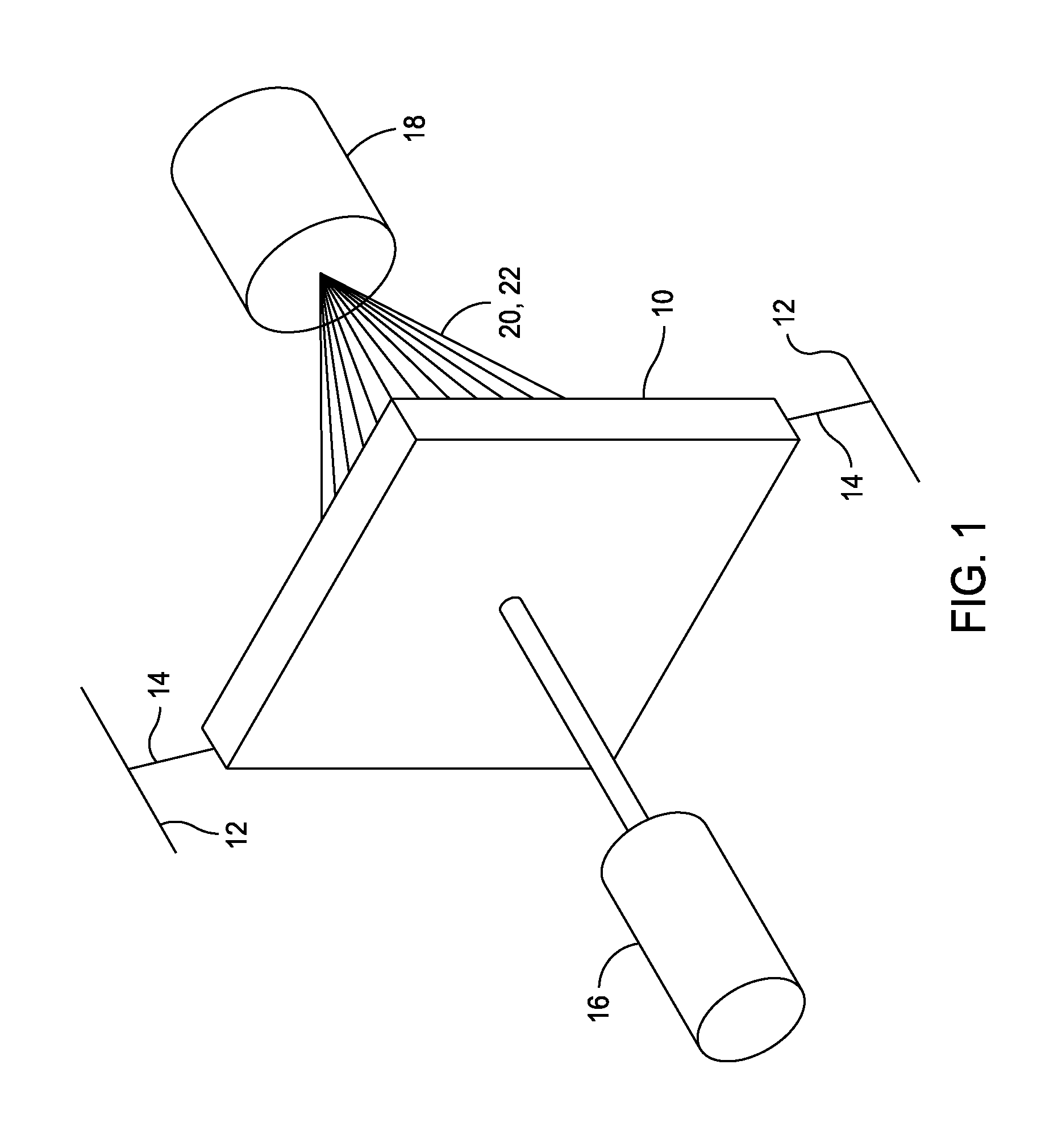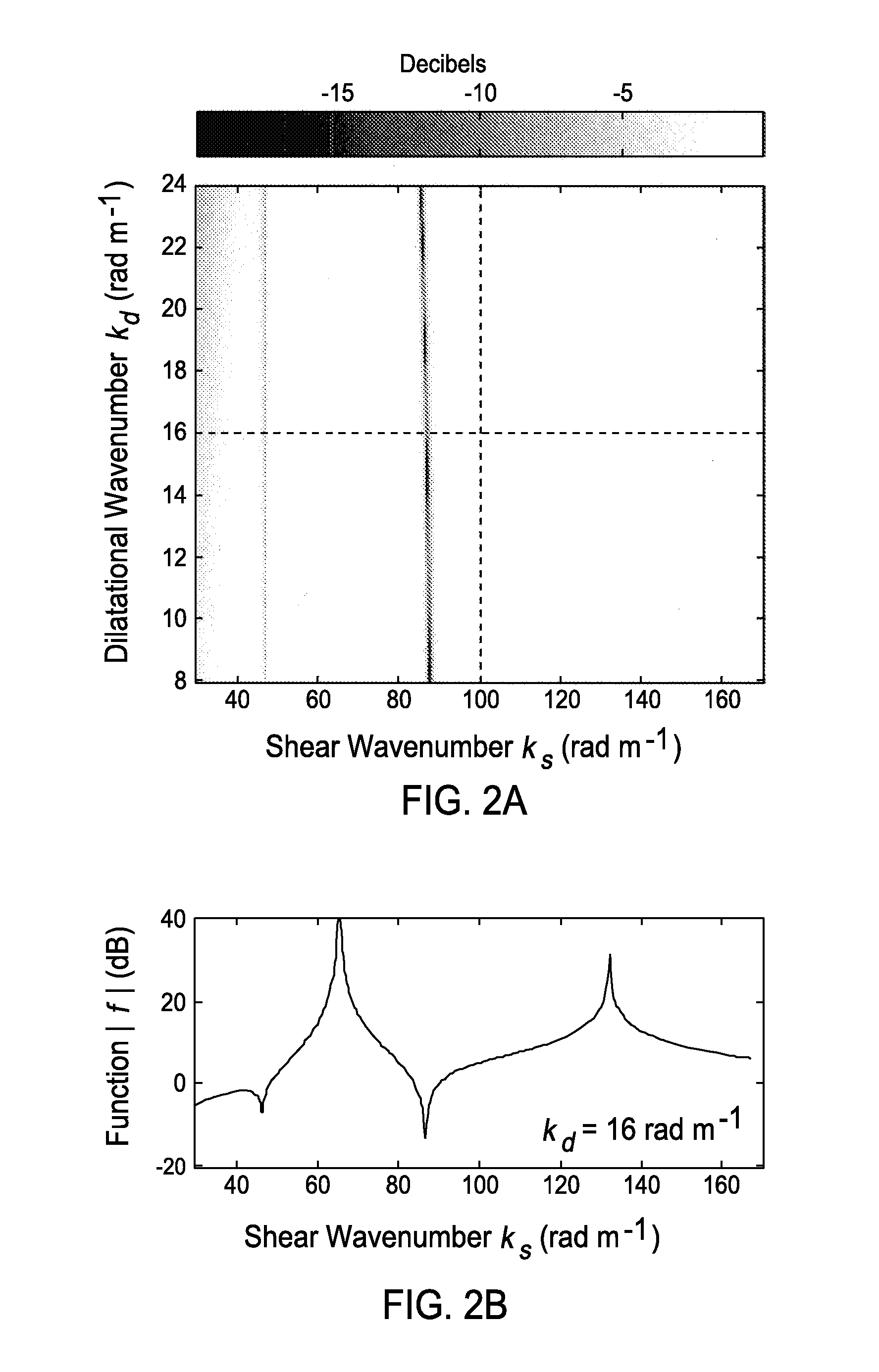Method for measuring shear wavespeed in an isotropic plate
a shear wave speed and isotropic plate technology, applied in the direction of instruments, spectral/fourier analysis, material analysis, etc., can solve the problem of not having the capability to separate various wave types and their associated response levels, and achieve accurate estimation
- Summary
- Abstract
- Description
- Claims
- Application Information
AI Technical Summary
Benefits of technology
Problems solved by technology
Method used
Image
Examples
Embodiment Construction
[0026]A possible experimental setup for the present method is given in FIG. 1. A test plate 10 is joined to a structure or fixed frame 12 by resilient cords 14. Two corner supports are shown in the drawing, but more supports could be present. Plate 10 is preferably around 1 inch thick; however, almost any thickness can be used. Thinner plates lose vibration modes. Thicker plates lose vibration through losses in lossy materials such as resilient materials like plastic and rubber. Resilient cords 14 can be any elastic cord or spring providing sufficient elasticity to avoid affecting plate 10 vibration. A shaker 16 is joined to the center of plate 10. Shaker 16 can be an electromagnetic or mechanical shaker that is capable supporting the frequencies of interest. Shaker 16 should be joined to plate 10 at a single point. A laser vibrometer 18 is positioned on the opposite side of plate 10 allowing measurement of vibrations from the entire surface of plate 10. Vibrometer 18 provides a bea...
PUM
 Login to View More
Login to View More Abstract
Description
Claims
Application Information
 Login to View More
Login to View More - R&D
- Intellectual Property
- Life Sciences
- Materials
- Tech Scout
- Unparalleled Data Quality
- Higher Quality Content
- 60% Fewer Hallucinations
Browse by: Latest US Patents, China's latest patents, Technical Efficacy Thesaurus, Application Domain, Technology Topic, Popular Technical Reports.
© 2025 PatSnap. All rights reserved.Legal|Privacy policy|Modern Slavery Act Transparency Statement|Sitemap|About US| Contact US: help@patsnap.com



